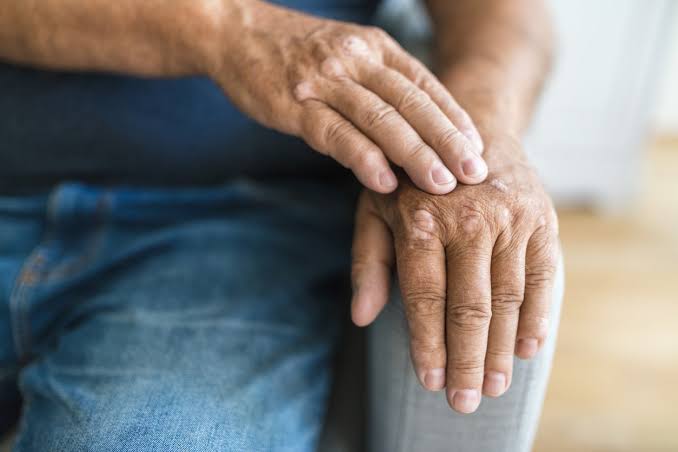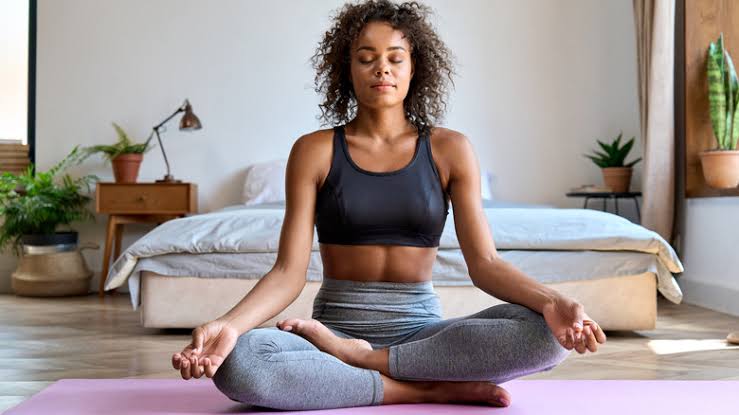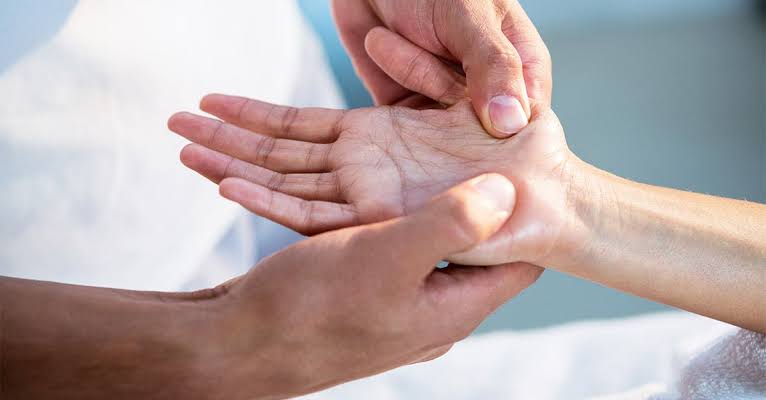Rheumatoid Arthritis Pain Relief - Exploring The Benefits Of Natural Therapy
Finding practical ways to relieve pain is essential for treating rheumatoid arthritis and enhancing the quality of life for individuals who are impacted. In spite of the wide range of therapy options, people seeking rheumatoid arthritis pain relief are becoming more and more interested in complementary therapies.
Author:Katharine TateReviewer:Karan EmeryFeb 22, 20249.4K Shares132.9K Views

Rheumatoid arthritis (RA) is characterized by the immune system mistakenly attacking healthy cells in the body, leading to inflammation and painful swelling in the affected areas. Finding practical ways to relieve pain is essential for treating rheumatoid arthritis and enhancing the quality of life for individuals who are impacted.
In spite of the wide range of therapy options, people seeking rheumatoid arthritis pain reliefare becoming more and more interested in complementary therapies. This change is the result of a desire to investigate non-pharmacological methods that reduce the possibility of side effects while simultaneously relieving discomfort.
Acupuncture
Acupuncture is a traditional Chinese medicine method that includes sticking thin needles into certain body parts to help the body heal and increase energy flow. Traditional Chinese medicine says that acupuncture can help keep the flow of energy, or qi, in the body's channels in balance.
It is thought that stimulating acupuncture points releases opioids, which are the body's natural painkillers, and other biochemicals that help lower pain and inflammation and improve health in general. Acupuncture is often used to treat a wide range of health problems, such as chronic pain, migraines, nausea, and diseases related to stress.
Western medicine still doesn't fully understand how acupuncture works, but it is becoming more and more accepted as a safe and effective complementary therapy. It is often used along with conventional medical treatments to improve general health and ease symptoms.
Tai Chi
Tai Chi, which is also called Tai Chi Chuan, is a Chinese martial art that has been around for hundreds of years. It focuses on deep breathing and slow, flowing moves. Tai Chi is based on Taoist theory and aims to balance the body's yin and yang energies while promoting mental and physical harmony.
Regularly doing Tai Chi is good for your health in many ways, like making you stronger, more flexible, and more balanced, and lowering your stress and worry. It's gentle and low-impact, so people of all ages and fitness levels can do it.
It can also be changed to fit people with different health problems or physical limits. Because it involves thoughtful movements and meditation, Tai Chi is good for your health in many ways. It can help you feel calm, at peace with yourself, and healthy all around.
Progressive Muscle Relaxation
Progressive Muscle Relaxation, or PMR, is a way to relax that involves gradually tensing and relaxing different groups of muscles all over the body. This can help reduce stress and ease muscle tension.
When it comes to Rheumatoid arthritis pain relief, PMR can be especially helpful because it helps people deal with both the physical pain and the mental stress that comes with having a chronic pain condition. By actively tightening and then relaxing muscles, PMR makes you more aware of how your body feels and gives you a sense of control over it.
This method can help people with Rheumatoid arthritis loosen up stiff muscles, make their joints more mobile, and ease the pain that comes with it. Besides that, PMR can lower stress hormones by making you feel deeply relaxed. This may help reduce inflammation and improve your general health. Including PMR in a full pain management plan for Rheumatoid arthritis can give people a useful way to deal with pain and make them feel more relaxed and comfortable.
Topical Creams, Gels, And Patches
Topical creams, gels, and patches are often used to treat Rheumatoid arthritis pain because they work directly on the muscles and joints that are hurting. When applied to the skin's surface, these mixtures usually have active ingredients like salicylates or nonsteroidal anti-inflammatory drugs (NSAIDs) like diclofenac.
These work to reduce swelling and pain. Some patches may also have capsaicin in them, which is a chemical found in chili peppers and can help dull pain by making nerve endings less sensitive and giving you a warming feeling. Topical treatments for rheumatoid arthritis have a number of benefits, such as targeted pain relief with fewer side effects on the body as a whole compared to oral medicines.
They can be especially helpful for people who have stomach problems or other reasons why they shouldn't take regular NSAIDs. Including creams, gels, and patches on the skin in a full pain management plan can give patients more ways to ease their pain and make their general quality of life better.
Deep Breathing
Deep breathing techniques can help people with Rheumatoid arthritis deal with their pain by making them feel better overall and reducing stress. Deep breathing exercises can help calm the body's stress response, which can make pain and inflammation worse if you do them regularly.
People with Rheumatoid arthritis can trigger the body's relaxation reaction by focusing on slow, deep breaths. This can ease muscle tension and make you feel at ease. Deep breathing also helps organs get more oxygen, which may help relieve pain and speed up the healing process.
Also, deep breathing exercises can help people forget about their pain and focus on a more calm and focused state of mind. Adding deep breathing to your daily routine can help with Rheumatoid arthritis pain control and be part of a more complete plan for dealing with the condition.
Meditation
People who are dealing with Rheumatoid arthritis pain may benefit from meditation because it helps them relax, lowers their stress, and makes them feel better overall. People with Rheumatoid arthritis can become more aware of their body and feelings through mindfulness meditation.
This lets them feel pain without resisting or judging it. Meditation helps people deal with their emotions better and lessens the mental pain that comes with chronic pain by teaching them to be less reactive. Also, types of meditation like focused attention or loving-kindness meditation can improve the way the brain processes pain, which can make pain seem less intense.
As an addition to standard treatments, regular meditation can be very helpful for people with Rheumatoid arthritis. It can help them deal with pain and make their general quality of life better.
Heat And Cold
Depending on the needs and preferences of the patient, heat and cold therapy are two frequently used modalities for controlling pain associated with rheumatoid arthritis, each with specific advantages. Applying heat to uncomfortable regions can assist to improve blood flow, relax muscles, and relieve joint stiffness.
Examples of this include warm baths, heating pads, and warm compresses. Conversely, using cold therapy, such as using ice packs or cold compresses, can assist to numb painful areas, reduce inflammation, and temporarily dull nerve sensations.
This numbing effect can be particularly helpful during severe flare-ups. For those with rheumatoid arthritis, alternating between heat and cold therapies, or figuring out a combination that suits each individual, can give efficient and adaptable pain management, improving comfort and increasing mobility.
Exercise
Exercise is essential for controlling the discomfort associated with rheumatoid arthritis because it increases muscle strength, joint flexibility, and general physical function. Regularly performing low-impact workouts like swimming, cycling, and walking can help to improve range of motion, lessen pain, and reduce stiffness related to rheumatoid arthritis. Strengthening exercises that concentrate on the muscles around afflicted joints can also offer more stability and support, which can lessen pain and strain.
Exercise also causes the body to release endorphins, which are naturally occurring medicines that can elevate mood and lessen pain perception. While it's important for people with rheumatoid arthritis to speak with their doctor before beginning an exercise program, adding exercise into everyday activities can be a useful tactic for pain management, improving general health, and preserving independence.
Massage
Because massage therapy promotes relaxation, improves circulation, and eases muscle tension, it can be an effective supplementary treatment for treating discomfort associated with rheumatoid arthritis. Massage therapy reduces stiffness, improves joint mobility, and eases pain related to rheumatoid arthritis by gently manipulating soft tissues. Furthermore, massage treatment triggers the body's natural painkillers, endorphins, to be released, which can improve general wellbeing and offer momentary pain relief.
Myofascial release, deep tissue massage, and Swedish massage are a few examples of techniques that can be customized to match the unique needs and preferences of people with rheumatoid arthritis, providing a secure and efficient method of pain management. Massage treatment can be very helpful in relieving symptoms and can be incorporated into a comprehensive care plan that aims to improve quality of life, even if it may not directly address the underlying causes of rheumatoid arthritis.
Rheumatoid Arthritis Pain Relief - FAQ
What Takes Rheumatoid Arthritis Pain Away?
Non-steroidal anti-inflammatory drugs (NSAIDs) or your doctor may prescribe a type called a COX-2 inhibitor, such as celecoxib or etoricoxib. These medicines can help relieve pain while also reducing inflammation in the joints, although they will not stop rheumatoid arthritis getting worse over time.
What Is The Best Pain Relief For A Rheumatoid Arthritis Flare Up?
Over-the-counter medications, such as acetaminophen, ibuprofen, or naproxen sodium, can help ease pain caused by a flare. But be sure to ask your doctor before taking these. Your prescription medicines may have variations of the same ingredients as these drugs, so taking more could be dangerous.
Does Rheumatoid Arthritis Hurt All Day?
The joint pain associated with rheumatoid arthritis is usually a throbbing and aching pain. It is often worse in the mornings and after a period of inactivity.
Final Words
Exploring the benefits of natural therapy for rheumatoid arthritis pain relief reveals promising opportunities for managing discomfort and enhancing overall well-being. From gentle exercises like yoga to dietary supplements like turmeric, these natural approaches offer alternative strategies that can complement traditional treatments. By incorporating these therapies into a comprehensive care plan, individuals living with rheumatoid arthritis pain relief may find relief and improved quality of life, paving the way for greater comfort and mobility.

Katharine Tate
Author

Karan Emery
Reviewer
Latest Articles
Popular Articles

